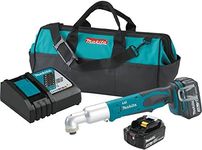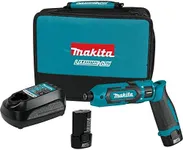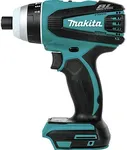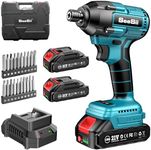Buying Guide for the Best Makita Impact Drivers
Choosing the right impact driver can make a significant difference in your DIY projects or professional work. Impact drivers are powerful tools designed to drive screws and bolts with high torque and minimal effort. When selecting an impact driver, it's essential to consider various specifications to ensure you get the best fit for your needs. Here are the key specs to look at and how to navigate them.TorqueTorque is the force that the impact driver applies to turn an object, usually measured in inch-pounds (in-lbs) or Newton-meters (Nm). Higher torque means the driver can handle tougher jobs, such as driving large screws or bolts into hard materials. For light-duty tasks like assembling furniture, a lower torque (around 800-1,200 in-lbs) is sufficient. For more demanding tasks like construction or automotive work, look for higher torque (1,500 in-lbs and above). Choose based on the toughest job you expect to handle.
Speed (RPM)Speed, measured in revolutions per minute (RPM), indicates how fast the driver can turn a screw or bolt. Higher speeds are useful for quickly driving screws into softer materials, while lower speeds provide more control for precision work. Impact drivers typically offer variable speed settings, ranging from 0-2,000 RPM for general use to 0-3,000 RPM for high-speed applications. Consider the types of materials and the precision required for your projects when choosing the speed range.
Impacts Per Minute (IPM)Impacts Per Minute (IPM) measures how many times the internal hammer strikes the anvil per minute, contributing to the tool's driving power. Higher IPM means the driver can handle tougher materials and more stubborn fasteners. For light to medium tasks, an IPM of around 2,000-3,000 is adequate. For heavy-duty applications, look for an IPM of 3,500 or higher. Match the IPM to the intensity of the work you plan to do.
Battery VoltageBattery voltage determines the power output of the impact driver. Common voltages are 12V, 18V, and 20V. A 12V impact driver is lighter and suitable for light-duty tasks and tight spaces. An 18V or 20V driver offers more power and is better for heavy-duty tasks. Consider the balance between power and weight, and choose a voltage that matches the intensity and duration of your work.
Battery Capacity (Ah)Battery capacity, measured in ampere-hours (Ah), indicates how long the battery will last on a single charge. Higher Ah means longer runtime. For occasional use, a 1.5-2.0 Ah battery may be sufficient. For extended or professional use, look for batteries with 3.0 Ah or higher. Choose based on how long you need the tool to run between charges.
WeightThe weight of the impact driver affects how comfortable it is to use, especially for extended periods. Lighter models (around 2-3 pounds) are easier to handle and reduce fatigue, making them ideal for overhead or repetitive tasks. Heavier models (4 pounds and above) may offer more power but can be tiring to use for long durations. Consider the balance between power and comfort based on the nature of your work.
Chuck SizeThe chuck size determines the maximum diameter of the bit that the impact driver can hold. Most impact drivers have a 1/4-inch hex chuck, which is standard for driving screws and small bolts. Some models may offer a 1/2-inch chuck for larger bits. Choose a chuck size that matches the types of bits you plan to use.
Additional FeaturesAdditional features like LED lights, brushless motors, and ergonomic grips can enhance the usability and efficiency of the impact driver. LED lights are useful for working in low-light conditions. Brushless motors offer better efficiency, longer runtime, and less maintenance. Ergonomic grips improve comfort and control. Consider which features will make your work easier and more efficient.




















